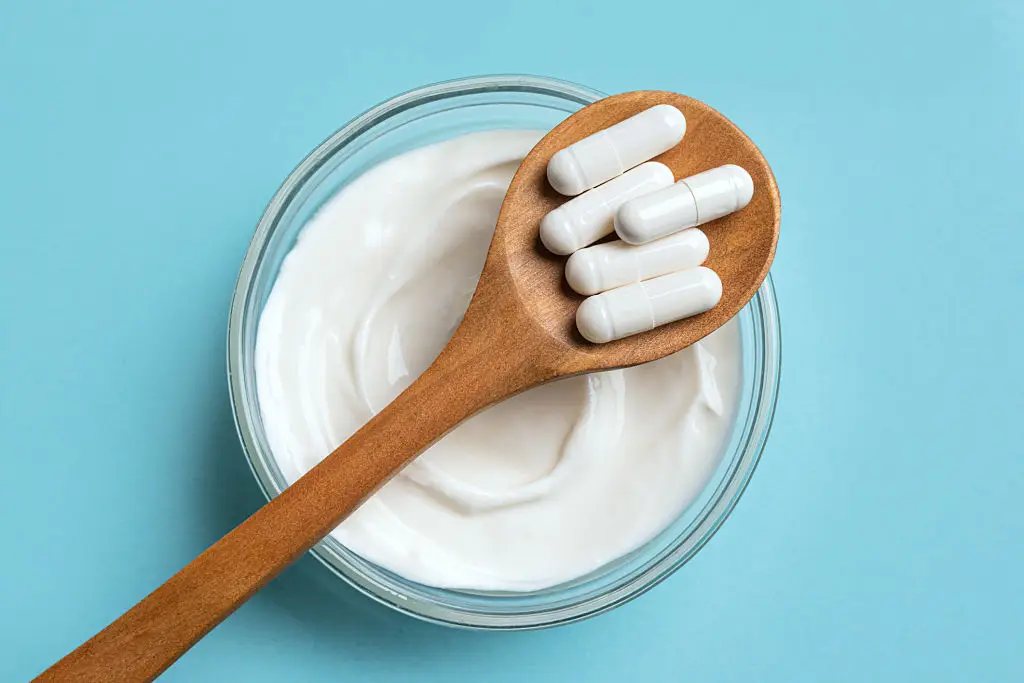11 Surprising Ways the Loneliness Hormone Drives Inflammation
Loneliness isn’t just an emotional ache — it reaches into biology and nudges the body toward inflammation. Scientists sometimes call oxytocin the "loneliness hormone" because variations in social contact change oxytocin signaling and related stress responses. At the same time, loneliness triggers several other systems: stress hormones, immune shifts, sleep disruption, metabolic changes, and even molecular-level gene expression. Together, these pathways help explain why social disconnection is linked to higher rates of heart disease, slower healing, and increased mortality in large population studies. The U.S. Surgeon General has described social connection as a public-health priority, and meta-analytic work has compared the mortality risk of sustained social isolation to other major risk factors. This article breaks the science into eleven clear mechanisms so you can see how isolation fuels inflammation and what practical, age-friendly steps can reduce risk. Each entry explains the biological pathway in plain language, offers evidence-based context, and gives realistic actions that older adults and caregivers can try. The goal is not to alarm but to empower. Small, steady changes in daily routine, safe social contact, sleep habits, and movement can lower inflammation over time. If you have medical concerns or chronic conditions, please bring these issues to a trusted clinician — especially where specific tests or treatments might be considered. Below, find the eleven surprising ways that loneliness can drive inflammation and practical ideas to interrupt those paths.
1. Cortisol Surge: How chronic stress hormone keeps inflammation lit

When social contact feels scarce, the body can treat that experience like a threat. Short-term cortisol helps with immediate challenges, but when loneliness keeps cortisol high, the immune system shifts toward a pro-inflammatory stance. Higher cortisol disrupts sleep and alters healing processes, making wounds slower to close and infections harder to fight. Studies and expert reviews link chronic perceived social threat to sustained cortisol elevation and downstream inflammatory signaling. Practically, lowering daily stress helps break the loop: short breathwork sessions of a few minutes, gentle stretching, and predictable daily rhythms blunt cortisol spikes. Older adults can try five minutes of paced breathing twice a day, a short walk after meals, or a predictable bedtime routine to reduce evening cortisol. If cortisol-related health problems are suspected, clinicians can check relevant labs and offer tailored strategies. Remember, small changes repeated over time are the most sustainable route to calmer stress responses and lower inflammation.
2. Oxytocin Shortfall and Touch Starvation: Missing bonding signals raise inflammation

Physical contact — a hug, a hand on the shoulder, a friendly handshake — triggers oxytocin release, which helps soothe stress and lower inflammatory signaling. When touch is rare, that calming oxytocin feedback is reduced and stress hormones can dominate. Clinicians and therapists call this "touch starvation," and people often report sleep trouble, anxiety, and a sense of emotional numbness when touch is absent. Importantly, oxytocin’s benefits can be partially replaced with safe alternatives: therapeutic massage, pet therapy, or even weighted blankets can simulate comforting sensory input. For older adults with mobility or access limits, pet visits, professional chair massage, or regular physical therapy with a trusted practitioner can offer both emotional and physiological benefits. While oxytocin isn’t a cure-all, adding safe, regular touch—where appropriate—acts as a social buffer and helps lower inflammation over time.
3. Innate Immune Activation: The body’s frontline goes on high alert

The innate immune system provides rapid, first-response protection. Chronic loneliness is associated with higher baseline activity in this system, which raises circulating inflammatory proteins. For example, epidemiological studies show links between social isolation and elevated markers such as C-reactive protein and interleukin-6, which are general indicators of inflammation. That higher resting inflammation contributes to fatigue, pain, and long-term disease risk when it persists. The good news is that lifestyle steps can lower innate inflammatory activity: moderate aerobic activity, a Mediterranean-style diet rich in vegetables and healthy fats, and consistent sleep each reduce inflammatory markers. Clinically, physicians can measure common markers if symptoms suggest a problem and tailor interventions accordingly. Because specific biomarker thresholds and clinical interventions vary, ask a medical professional to interpret lab results and recommend any treatment.
4. Adaptive Immune Suppression: Weaker antibody and antiviral responses

Loneliness doesn’t only raise inflammation; it can blunt some parts of adaptive immunity too. Research indicates that people experiencing prolonged social isolation sometimes show weaker antibody responses to vaccines and slower recovery from viral infections. That pattern suggests the immune system’s specialized, learned arm can perform less efficiently under chronic social stress. For older adults, this is a practical concern because vaccine responses naturally change with age. Actions that support adaptive immunity include maintaining routine medical care, staying up to date on recommended vaccines, and prioritizing sleep and nutrition that sustain immune function. Social engagement itself can support immune resilience by reducing chronic stress. If you have concerns about immune responses, discuss them with your clinician, who can recommend appropriate testing or interventions.
5. Sleep Disruption Loops: Poor sleep amplifies inflammation

Loneliness and the worry that often accompanies it commonly fragment sleep. Even when people fall asleep, their sleep can be lighter and less restorative. Poor sleep increases inflammatory cytokines and strengthens the link between stress and inflammation. The result is a cyclical pattern: isolation raises stress, stress breaks sleep, poor sleep raises inflammation, and that inflammation worsens mood and energy, making social engagement harder. Breaking this loop starts with practical sleep hygiene: a fixed sleep schedule, a calming pre-sleep routine, and a bedroom that’s quiet, cool, and dark. For older adults, limiting late-day caffeine, short daytime movement, and light-based routines can help regulate circadian rhythms. If sleep problems persist, a clinician can evaluate for treatable causes like sleep apnea or medication side effects.
6. Cardiovascular Inflammation: How isolation accelerates heart risk

Social connection affects heart health through both behavior and biology. Chronic stress and elevated inflammation contribute to higher blood pressure, worse endothelial function, and greater arterial inflammation — all pathways that raise cardiovascular risk. Large population studies link poor social ties with increased rates of heart attack and stroke, and experimental work ties social stress to unfavorable patterns in heart rate and vascular inflammation. Heart-healthy social activities can help reverse that trend: brisk walks with friends, community exercise classes, and shared meal programs encourage both activity and connection. Regular medical follow-up for blood pressure and lipids remains important, especially for older adults. Combining social engagement with established cardiovascular risk reduction — diet, activity, and medication as advised — provides both emotional and physical protection.
7. Autonomic Imbalance and Low Vagal Tone: Less social buffering, more inflammation

The autonomic nervous system balances "fight-or-flight" responses and calm states. Social support acts as a regulator, strengthening vagal (parasympathetic) tone and improving heart-rate variability. When social buffering is missing, people often show lower vagal tone and higher sympathetic arousal, which promotes inflammatory signaling. Simple practices can boost vagal activity: slow-paced breathing, gentle yoga, and short social rituals (a daily phone check-in) help re-establish the calm side of autonomic balance. For older adults, chair-based breathing exercises or seated tai chi provide accessible options. Improving autonomic balance doesn’t erase all risk, but it reduces one biological push toward inflammation while offering immediate mood benefits.
8. Metabolic Dysregulation: Isolation, diet, and insulin resistance

Behavioral changes linked to loneliness — reduced activity, irregular meals, and comfort eating — can promote visceral fat accumulation and insulin resistance. Visceral fat and metabolic dysfunction are pro-inflammatory states that raise risks for diabetes and cardiovascular disease. That makes metabolic health a key pathway through which social life affects inflammation. Practical, sustainable changes work best: short daily walks, small protein-rich meals, and easy home-cooked dishes lower metabolic strain. For older adults, community meal programs or gentle group exercise classes can combine social contact with metabolic benefits. Clinical assessment of blood sugar and metabolic markers may be appropriate when risk or symptoms are present.
9. Microbiome Shifts: Social life, food, and gut inflammation

The gut microbiome responds to diet, sleep, stress, and social behavior — all things that change with isolation. Less diverse diets or disrupted routines can reduce microbiome diversity and increase gut inflammation, which spills into systemic inflammation through immune signaling. While the science is still evolving, practical steps that support a healthy gut are low-risk and accessible: fiber-rich foods, occasional fermented items like yogurt or kefir when tolerated, and regular meal times. Shared meals are doubly helpful: they improve diet quality and encourage social engagement. If gut symptoms are severe or persistent, a clinician or dietitian can recommend individualized guidance.
10. Gene Expression Changes: Loneliness leaves molecular marks

Emerging research shows that chronic social stress can alter how certain genes are expressed — a pattern called the "conserved transcriptional response to adversity" or CTRA. This pattern increases production of pro-inflammatory proteins while reducing antiviral gene activity. Those molecular changes help explain how persistent loneliness translates into long-term disease risk across multiple organ systems. For readers, the take-home is that chronic social stress can leave measurable biological traces, but these patterns are not set in stone. Improving social contact, reducing stress, and adopting healthy habits can shift gene-expression profiles over time. Because gene-expression testing and clinical interpretation are specialized, any claim about specific gene changes or thresholds should be reviewed by medical or genomic specialists before acting on lab results.
11. Behavior Cascades: Smoking, drinking, and inactivity amplify inflammation

Loneliness often nudges people toward coping behaviors that escalate inflammation. Increased smoking, heavier drinking, disrupted routines, and sedentary habits all add inflammatory burden. Those behaviors also make it harder to re-engage socially, forming a self-reinforcing cycle. Practical steps focus on harm reduction and gradual change: connect with local cessation programs, try short activity bursts with a friend, or join community groups that pair a shared interest with light movement. For older adults, faith communities, library programs, or senior-center classes can offer lower-barrier opportunities. Behavioral shifts are rarely perfect, but steady, supported changes lower both inflammation and the barriers to more social contact.
Bringing warmth back to the biology: small social changes, meaningful health gains

Loneliness reaches every level of the body — from signaling molecules like oxytocin and cortisol to immune activity, sleep patterns, metabolism, and even gene expression. That sounds big because it is big. But the promising counterpoint is that many of the protective actions are simple, realistic, and safe for older adults when adapted appropriately. Try one small habit: a twice-weekly walk with a neighbor, a weekly phone call with a friend, or a bedtime routine that stabilizes sleep. Consider safe touch alternatives like professional massage or pet visits where appropriate. Pair social steps with health basics — moderate activity, a plant-forward diet, and consistent sleep — to reduce inflammation through multiple biological paths. If you’re coping with persistent loneliness or physical symptoms, reach out to a clinician for personalized assessment; any specific biomarker testing or medication decisions should be guided by professionals. Social connection is powerful medicine, and small, steady moves can restore both comfort and biological resilience.